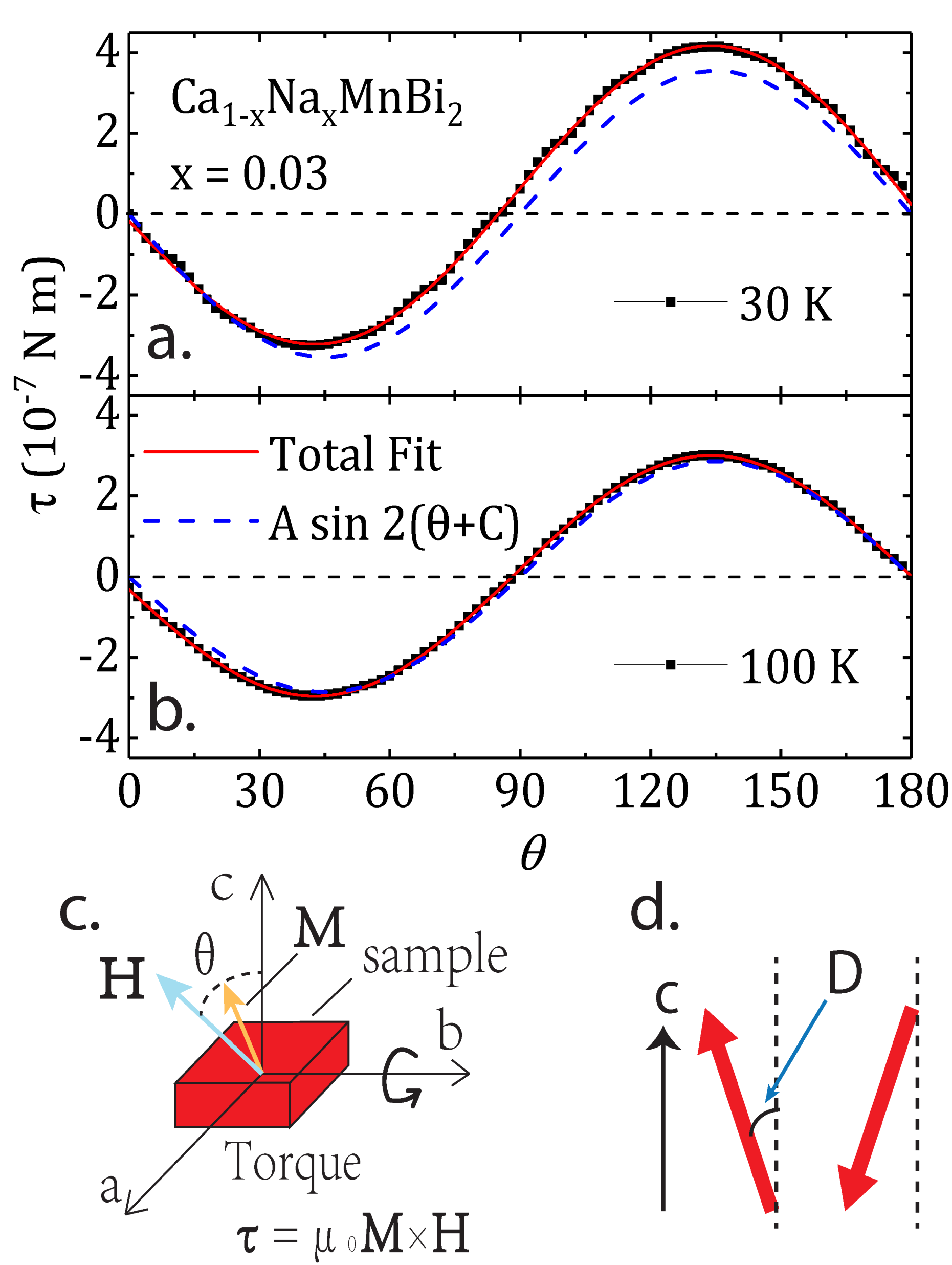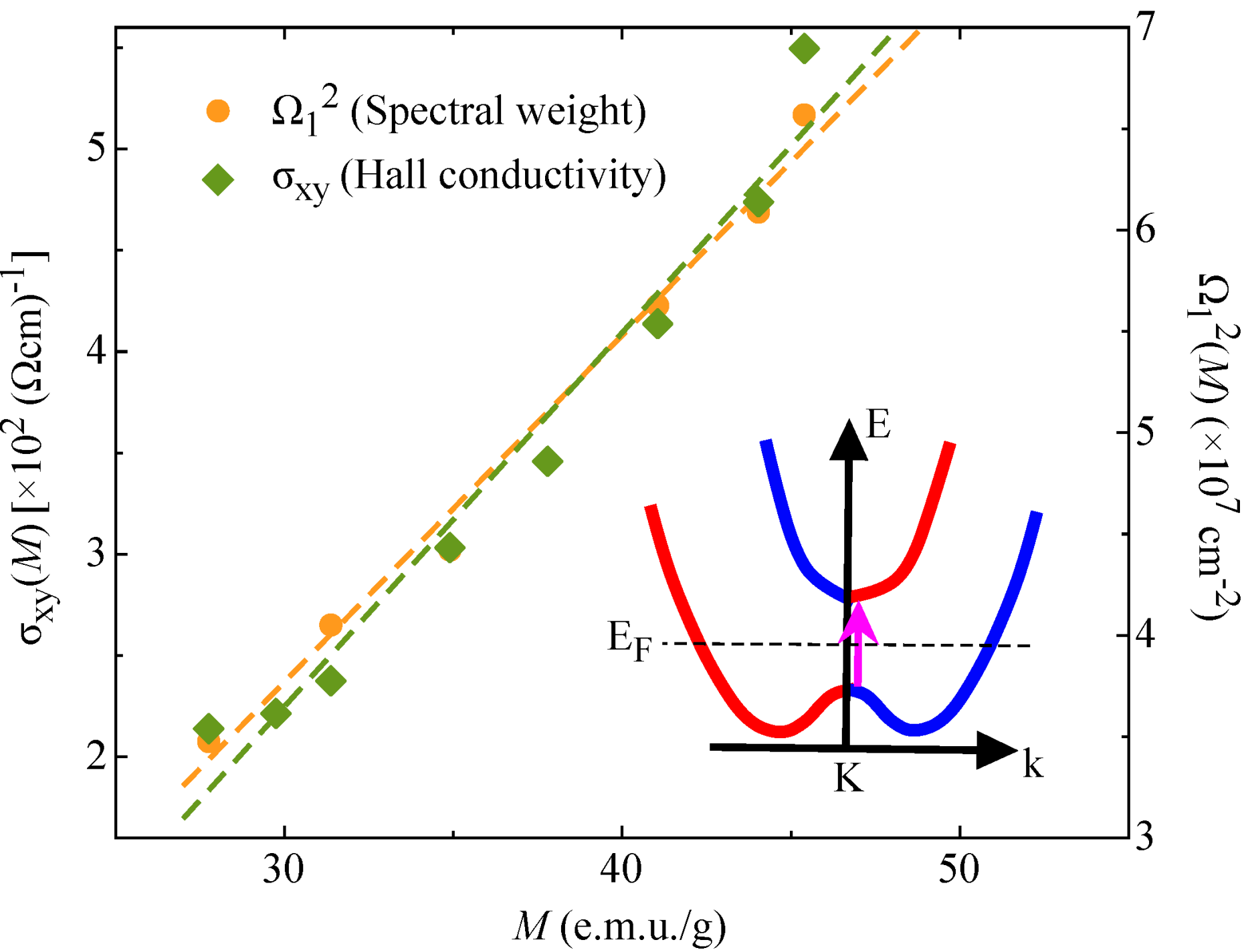Highlights 2020
Spin-canting-induced band reconstruction in the Dirac material Ca1-xNaxMnBi2
The quasi-two-dimensional AMnBi2 (A = alkaline as well as rare earth atom) lately advanced as an arena for the investigation of low-energy quasiparticles in antiferromagnetically ordered topological materials. The A = Sr or Ca compositions have attracted special attention because anisotropic Dirac cones may be realized. We perform reflectivity and magnetic-torque measurements on Na-doped CaMnBi2 (i.e., Ca1-xNaxMnBi2). Our novel data uncover the onset of a spin-canted antiferromagnetic order at Ts, underlying a super-exchange mechanism. With the support of dedicated first-principles calculations we establish a direct link between the spin-canting and a substantial reconstruction of the electronic band structure, possibly anticipating the generation of Weyl states. The major asset of the work has immediate implications for the spectral weight reshuffling in the optical response, signalling a partial gapping of the Fermi surface, and the onset of an anomaly in the dc transport properties below Ts.
Related paper
Further reading
Electronic correlations in the van der Waals ferromagnet Fe3GeTe2 revealed by its charge dynamics
Fe3GeTe2 is one of the rare and elusive ferromagnetic topological van der Waals semimetals with a high Curie temperature TC ≃ 200 K and it displays an unconventional interplay between topology and magnetism. Our work consists in measurements of the reflectivity from the far infrared to the ultraviolet, which is the prerequisite in order to perform reliable Kramers–Kronig transformation of the measured quantity, giving access to all optical functions. The temperature (T) dependence of the optical response in Fe3GeTe2 provides signatures of the dual itinerant and localised character of the Fe 3d electrons and reveals a two-fold reshuffling of spectral weight, signalling the role played by Hund's coupling as well as coherence effects. This has far-reaching implications in relation to the excitation involving the topological nodal line gapped by spin–orbit coupling, which may account for the remarkable anomalous Hall effect upon lowering T.


